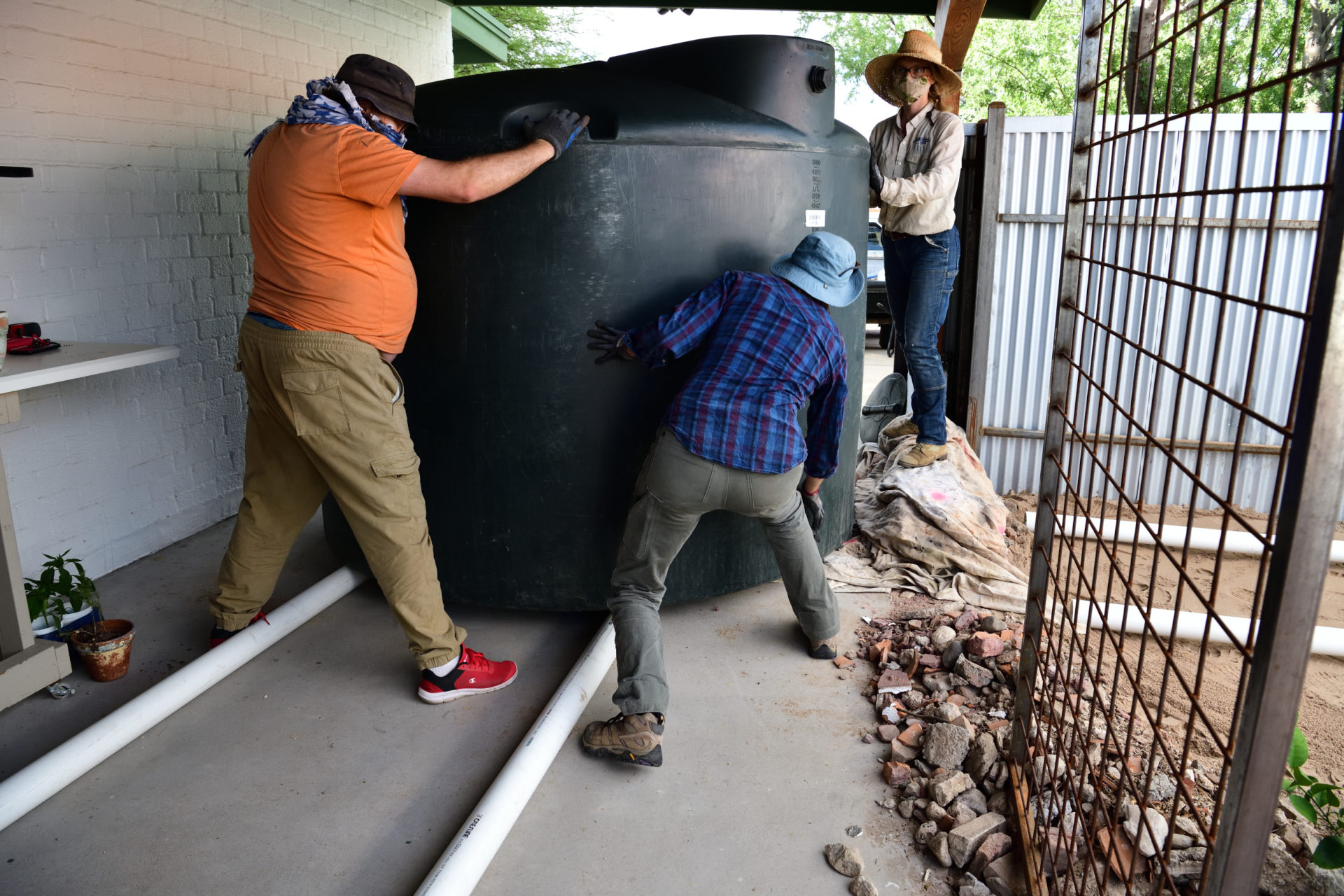During World War II, Victory Gardens accounted for one third of American vegetable production. This was a government-led effort that aimed to lower the price of vegetables that were needed to feed the troops.
Among the millions of Victory Gardeners was my Great Grandmother Martha. From her plot in Buffalo, New York, she raised enough food to feed eight people.
I was named for my great grandmother, whom I never met, but I share her passion for vegetable gardening. My Tucson garden currently consists of three raised beds and many small pots.
Advantages of Rainwater Harvesting
For years, I’ve been using city water in the garden, but that’s about to change. Staff and volunteers from the Watershed Management Group just installed a 1,500-gallon rainwater harvesting cistern in my side yard.
Less than a week after the installation was completed, the monsoon rains started falling. The cistern is harvesting rain from 500 square feet of roof space, which works out to 250 gallons from a one-inch rain. So far, we’ve had 1.50 inches, and more is expected.
For now, the great watering can in the sky is taking care of my garden. Once the weather dries out, I’ll using the cistern water for the plants. I think they’ll enjoy the change, because rainwater contains lower amounts of minerals and salts than city water.
Previous Water Harvesting Workshops
The Watershed Management Group and I go back a long way. The cistern workshop is the fifth that I have hosted at my place. Here are summaries of the previous four:
